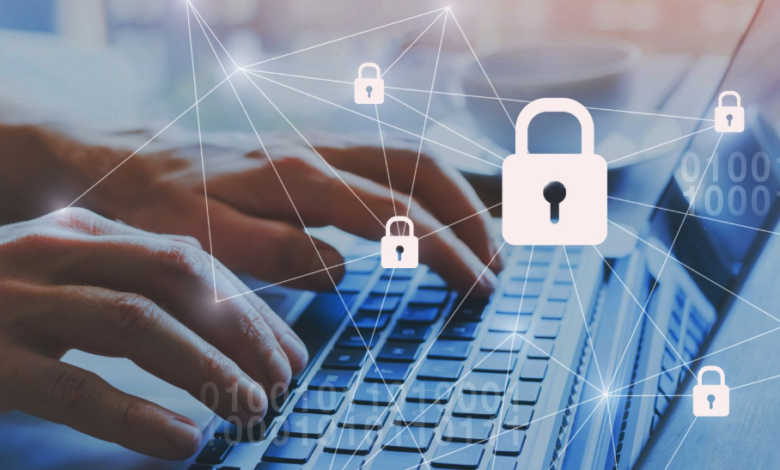Why Endpoint Protection Is the First Line of Defense Against Ransomware

Ransomware has emerged as one of the most destructive cyber threats facing businesses today. It not only locks files but also disrupts operations, steals data, and demands large ransoms. Its danger lies in how easily it can infiltrate networks, often through something as simple as a single compromised laptop or desktop. These endpoints are typically the primary targets, making their protection crucial.
Endpoint protection acts as a security guard for every device connected to your network, detecting, blocking, and responding to threats before they can spread. Unlike traditional antivirus tools, modern endpoint solutions utilize AI, behavioral analysis, and real-time monitoring to prevent even the most sophisticated ransomware. For businesses of all sizes, it’s not just about having security; it’s about having the proper security in place where attacks begin. Engage with the Managed IT Services Sacramento experts to strengthen your frontline defenses with advanced endpoint protection that stops ransomware before it reaches your critical systems.
In this blog, we will explore what endpoint protection is, why it serves as your first line of defense, and the role of endpoint protection in defending against ransomware.
What Is Endpoint Protection?
Endpoint protection refers to a cybersecurity measure designed to safeguard personal devices, including laptops, desktops, servers, and mobile devices, from threats such as ransomware, malware, and unauthorized access. It acts as a barrier between each device and potential cyberattacks, utilizing tools such as antivirus software, firewalls, behavior monitoring, and threat detection. By safeguarding every endpoint, it helps prevent threats from entering and spreading across your network.
Why Endpoint Protection Is the First Line of Defense?
Ransomware often enters a network due to a minor error made on a single device. Whether it’s a laptop, desktop, or smartphone, these endpoints are where cybercriminals often strike first. That’s why protecting them is so important.
- Threats Often Enter Through Endpoints
Most ransomware attacks begin with user actions, like clicking a malicious link or downloading a harmful file. These actions happen on endpoints, making them the first target. If these devices aren’t protected, your entire system becomes vulnerable.
- Stops Attacks at the Entry Point
Endpoint protection catches ransomware before it moves beyond the infected device. By stopping it early, it prevents data encryption, file loss, and network-wide damage.
- Real-Time Monitoring and Response
Modern solutions track device activity continuously. When something suspicious occurs, they react instantly, blocking threats without requiring manual input.
- Isolates Infected Devices
If a device is compromised, it can be automatically disconnected from the rest of the network. This stops the attack from spreading and protects other systems.
See also: Smart Home Technology and Its Influence on Property Value
Role of Endpoint Protection in Defending Against Ransomware
Endpoint protection serves as your primary defense against ransomware, particularly at a time when cybercriminals are continuously evolving their strategies. Every device on your network needs the ability to detect threats, respond to them, and prevent them from escalating into larger problems. Here’s the role of endpoint protection in defending against ransomware.
- Real-Time Threat Detection
Everything starts with speed. The moment something suspicious appears on a device, whether it’s a rogue email attachment or an unusual file, real-time threat detection kicks in. It’s like having a digital watchdog that never sleeps.
These systems don’t just look for known malware signatures; they keep an eye out for patterns and behaviors that signal something isn’t right. This quick response helps secure things before ransomware can spread or encrypt any valuable data.
- Behavioral Analysis and Anomaly Detection
Behavioral analysis and anomaly detection focus on spotting unusual activity rather than waiting for known threats. Instead of scanning for specific malware signatures, this approach looks at how users, files, and applications typically behave.
When something suddenly acts out of character, such as a process attempting to modify large numbers of files rapidly, it triggers an alert. This helps catch ransomware and other threats that are new or disguised, stopping attacks that traditional methods might miss before they cause severe damage.
- Blocking Malicious File Executions
Once ransomware gains access to a system, it typically requires a malicious program to cause damage. Endpoint protection acts like a digital bouncer at this stage.
Even if a file manages to bypass other defenses, if it attempts to execute harmful code or launch from an unusual location, the protection software can shut it down immediately. It’s a simple yet powerful layer that can prevent attacks from ever starting.
- File and Process Monitoring
One of the most significant issues with ransomware is how it often hides in plain sight. It could arrive as a harmless-looking PDF or infiltrated via a browser plugin.
With active file and process monitoring, your protection tools are constantly scanning what’s happening behind the scenes, like which files are being accessed, what processes are running, and whether they’re behaving normally. If a file starts encrypting other files, that’s an immediate red flag, and the system can isolate it before the damage spreads.
- Zero-Day Threat Protection
Zero-day threat protection defends against brand-new vulnerabilities that haven’t been patched or even discovered by software vendors. Instead of relying on known malware signatures, it employs advanced techniques, such as AI-driven behavior analysis, to detect unusual activity early.
Even if an attacker attempts something that has never been seen before, the system can still flag and block it before any damage occurs. It’s a proactive defense layer that keeps your endpoints safe from the unknown.
- Integrated Data Encryption
Integrated data encryption ensures that even if ransomware manages to bypass other defenses, your sensitive data remains unreadable and secure. It works silently in the background, converting files into scrambled, protected formats that require decryption keys to access.
This means that even if attackers try to exfiltrate or lock your data, they can’t use it. With encryption built directly into endpoint protection, every file, whether stored locally or in transit, is automatically shielded, reducing the risk of data exposure during a breach. If you are looking for reliable protection that keeps your data secure even during a ransomware attack, contact the IT Support Sacramento team.
- Remote Device Management
Remote device management keeps your endpoints protected, regardless of their location, whether in the office, at home, or on the go. It enables security teams to monitor, update, and manage devices from a centralized dashboard.
If a threat is detected, the affected device can be isolated instantly to prevent spread. This ensures consistent protection across all locations, reducing risks associated with remote work and helping your business stay secure without requiring hands-on IT access for every device.
- Detailed Incident Logging and Threat Forensics
When something does go wrong, and let’s be honest, sometimes it does, being able to trace the steps of the attack matters. Detailed logs and forensic tools provide a play-by-play of how the threat entered, what it attempted to do, and how the system responded. This isn’t just helpful for cleaning up; it’s gold for preventing future attacks and proving compliance during audits.
Final Thoughts
Behavioral analysis and anomaly detection focus on spotting unusual activity rather than waiting for known threats. Instead of scanning for specific malware signatures, this approach looks at how users, files, and applications typically behave. When something suddenly acts out of character, like a process trying to modify large numbers of files rapidly, it triggers an alert. This helps catch ransomware and other threats that are new or disguised, stopping attacks that traditional methods might miss before they cause severe damage.





